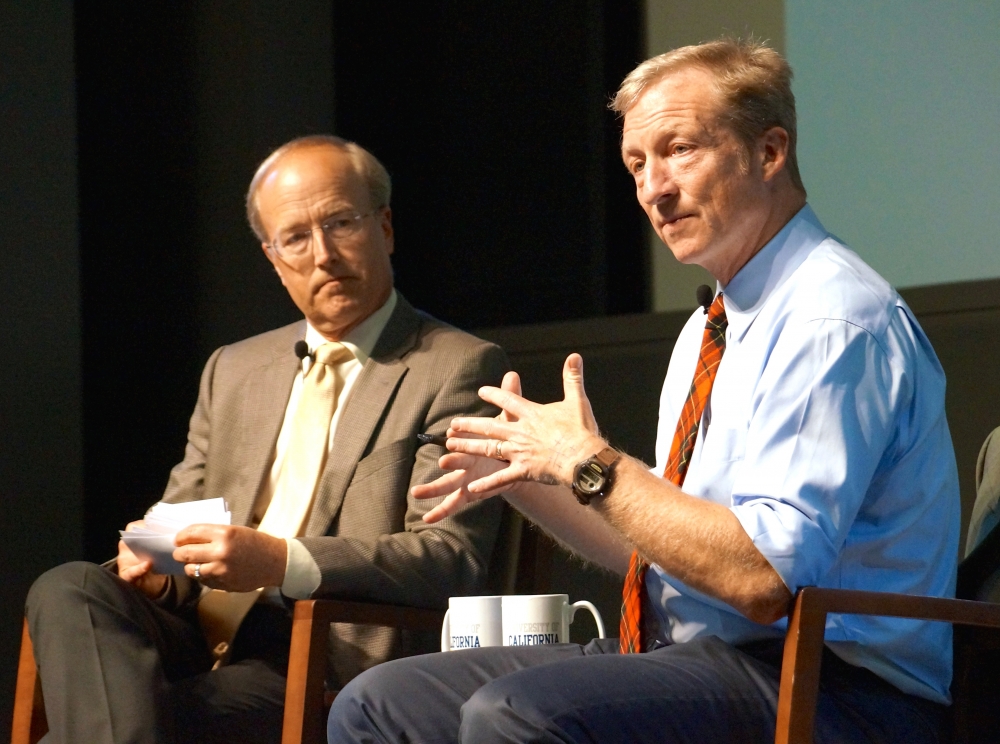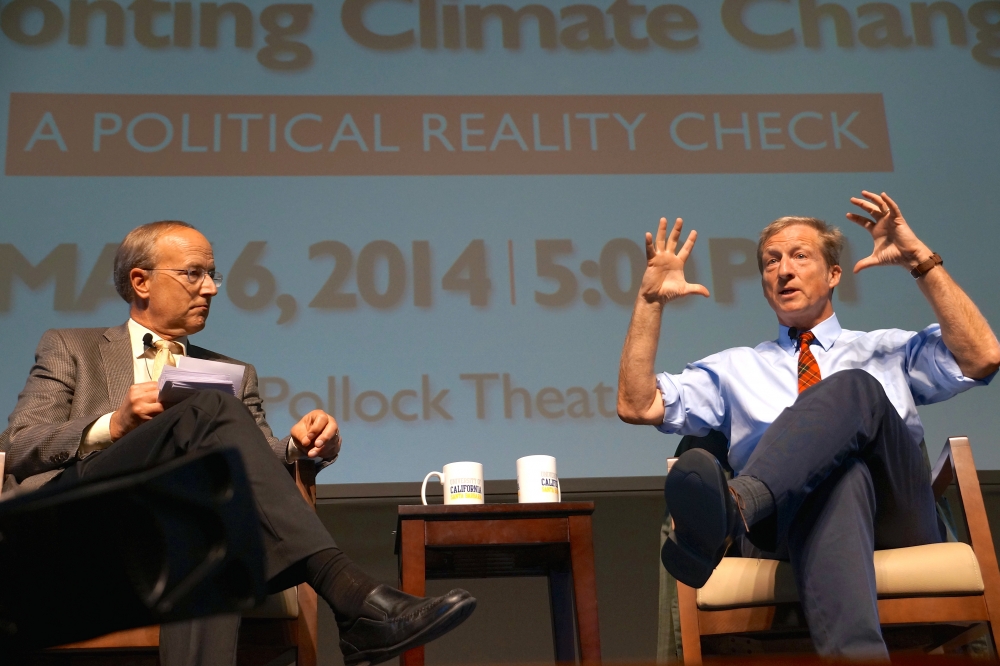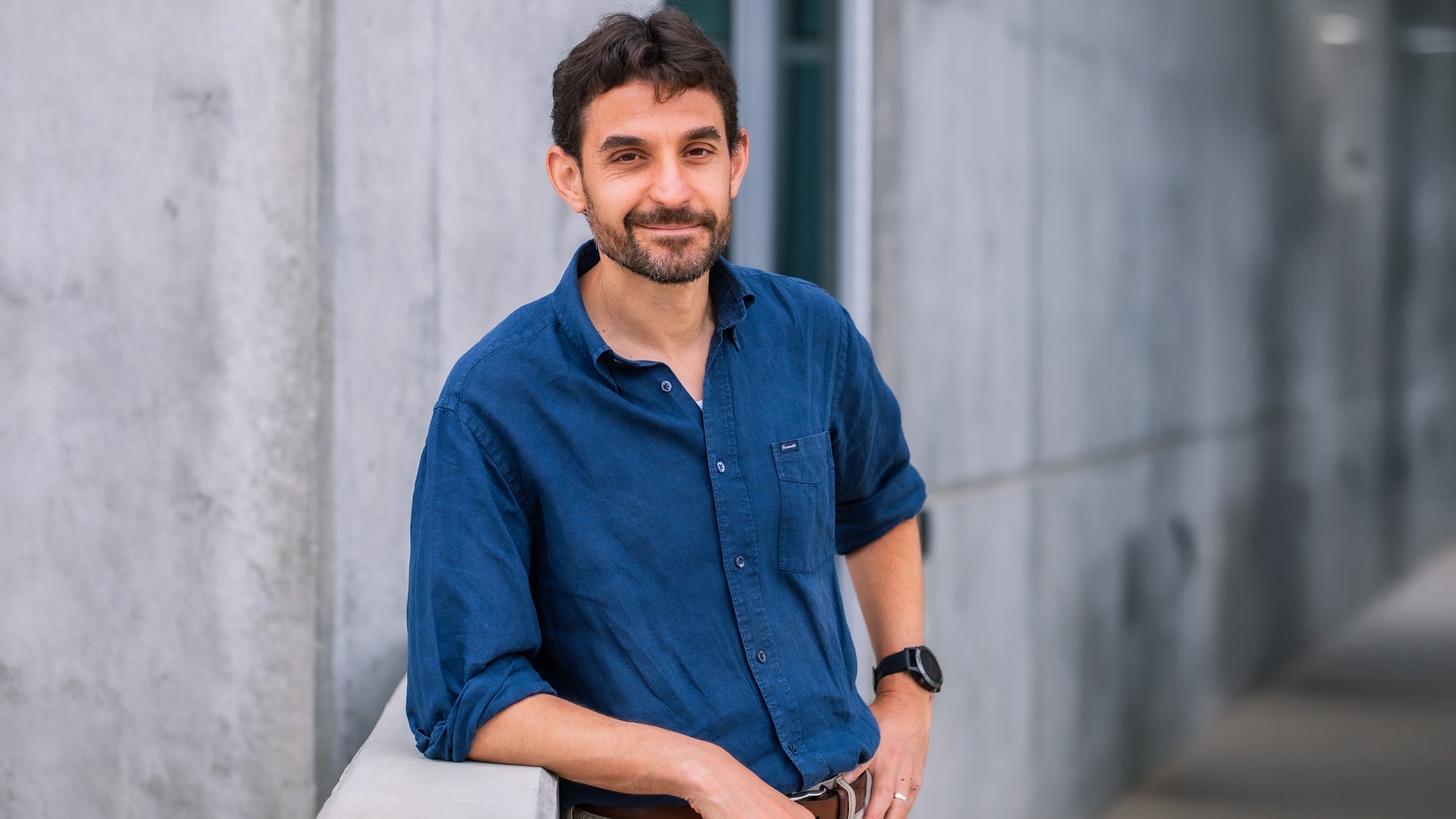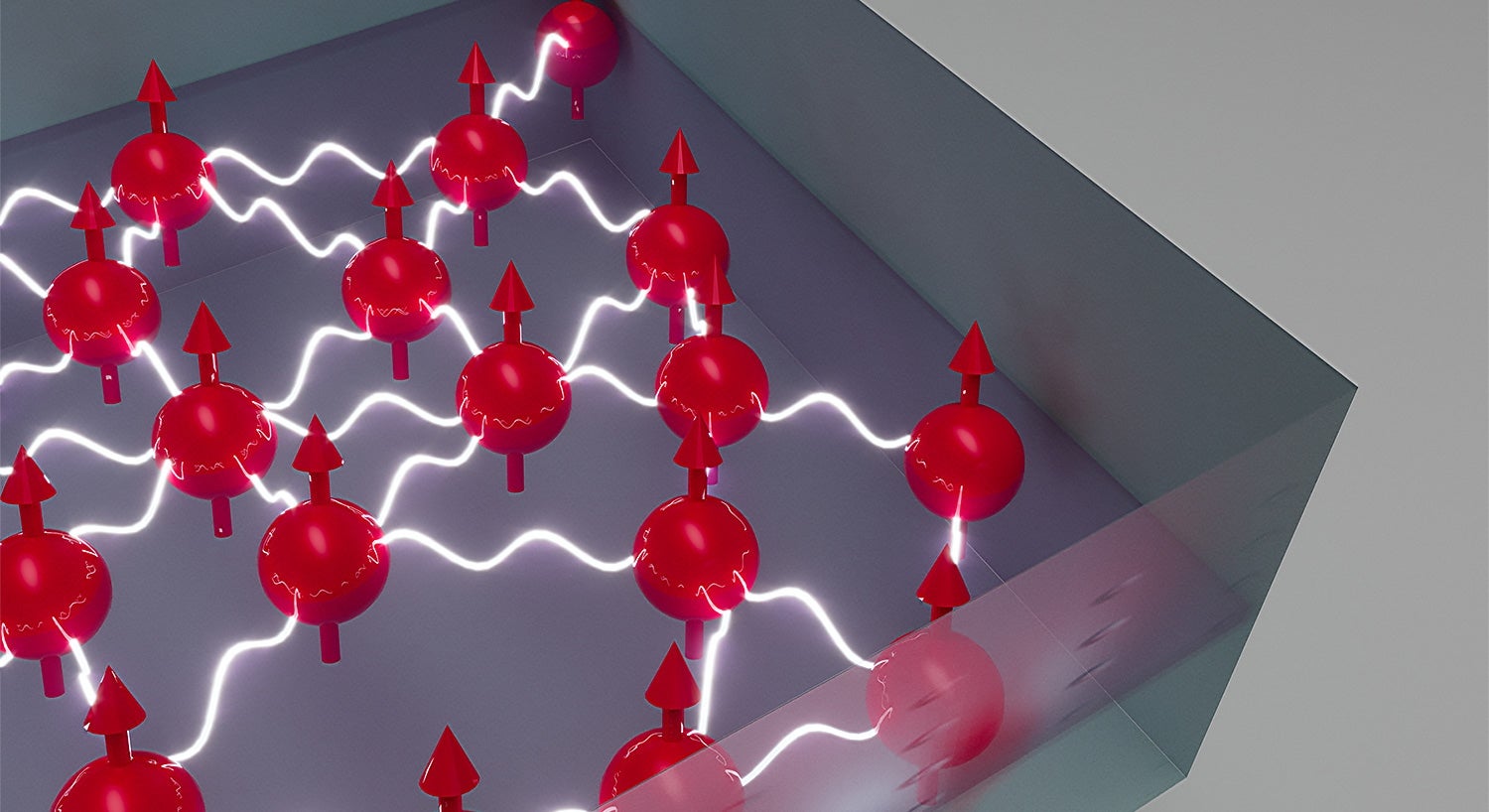Our Mission, Should We Choose to Accept It
In the nihilistic, partisan world of climate change rhetoric, in which doomsday scenarios run rampant, Tom Steyer is something of a rarity: He’s an optimist. Not only does he believe we can innovate our way out of an impending energy crisis, he thinks the private sector can be a leader in that effort and that sustainability and prosperity are not mutually exclusive.
So when Steyer, founder and president of NextGen Climate, spoke at the Pollock Theater at UC Santa Barbara Tuesday, May 6, audience members were all ears. From student to scientist to socially conscious citizen, each listened raptly as he laid out his perspective in a lecture titled “Confronting Climate Change: A Political Reality Check.” The talk was one of a series of Energy Leadership lectures hosted by the UCSB Institute for Energy Efficiency (IEE), and was followed by a Q&A session moderated by IEE director John Bowers.
“Generally there is one thing that is going to define how our society does, and in my opinion, this is it,” said Steyer, of the energy and environmental challenge that faces current and future generations. “Because if we get this right, we will do a lot of things. We will innovate; we will change things. It won’t be something easy but it will be something that we can definitely do if we set our minds to it, and the question is, will we set our minds to it?”
For Steyer, setting our minds to it involves embracing the challenge brought by climate change, as well as questioning entrenched beliefs such as the either/or choice between environment and economy; and letting go of obsolete notions that include the 1950s definition of work and jobs, or the business model that accompanies the country’s century-old energy infrastructure.
“We’ve got to get away from the idea that we can’t afford to innovate, we can’t afford to be creative, we can’t afford to do research,” said Steyer, adding that the money is there to support such activities. A 30-year veteran investor, Steyer in 2012 quit his day job to go full time into promoting the new, sometimes scary, sometimes counterintuitive set of changes society in general would have to undergo to deal with the need to reduce greenhouse gases and generate alternative sources to satisfy our growing hunger for energy.
To make these changes a reality, fundamental shifts in the way the business of energy is conducted need to happen. According to Steyer that’s where the federal government comes in, with policy decisions and investments that to a certain extent level the playing field for new ventures, decrease risk for investors and allow for innovations. Once the framework is in place we can step away from the old business model held by public utilities for over a century, a model that sees alternative energy generation, conservation and efficiency as a threat to their bottom lines, he explained.
But to make the right policy changes, he said, people have to accept that the climate and energy struggle is theirs. The salience of the issue, from the stormy and flooded East Coast to the drought-ridden West Coast, must be driven home, and that in turn would force people to voice their opinions via the ballot box.
“Democracy is not a spectator sport,” Steyer noted, adding that if legislators are made to pay attention to the urgency of the situation, they likely will step beyond the partisan lines that have limited their progress in the country’s response to climate change.
Despite the tug-of-war we see in Congress, government — particularly in California — seems to be progressing on energy issues, continued Steyer. That’s a good omen, he said, as California is on the leading edge of energy policy, and what happens in the Golden State tends to happen across the nation.
“There are two ways we’re going to come out of it,” Steyer said. “People are either going to loosen up on the partisanship, and start going back to the old model of looking at the problem together and compromising on the solutions, or the composition of Congress is going to change.”
He added that on the global level the United States will have to set an example before approaching other carbon-emitting nations for their participation in efforts to lower greenhouse gas emissions. The next chance for the U.S. to make its case will be at a climate summit in Paris in 2015.
California — and particularly Santa Barbara, where the modern-day environmental movement is said to have been born — are well-suited to get these changes started, Steyer said. And UCSB, he added, “is as good as it gets” from both a research and behavioral standpoint. But the reality of the situation is a grave one, and one that needs immediate and concerted action.
“If we’re going to survive, we’re going to have to produce and use energy in a very different way,” Steyer said. “For all the things that we’ve been doing well, for all the progress we’ve been making, for all the technological change that’s been going on, we’ve been producing more carbon dioxide every year. If we decide as a society that this is (our) World War II, we can solve it.”






